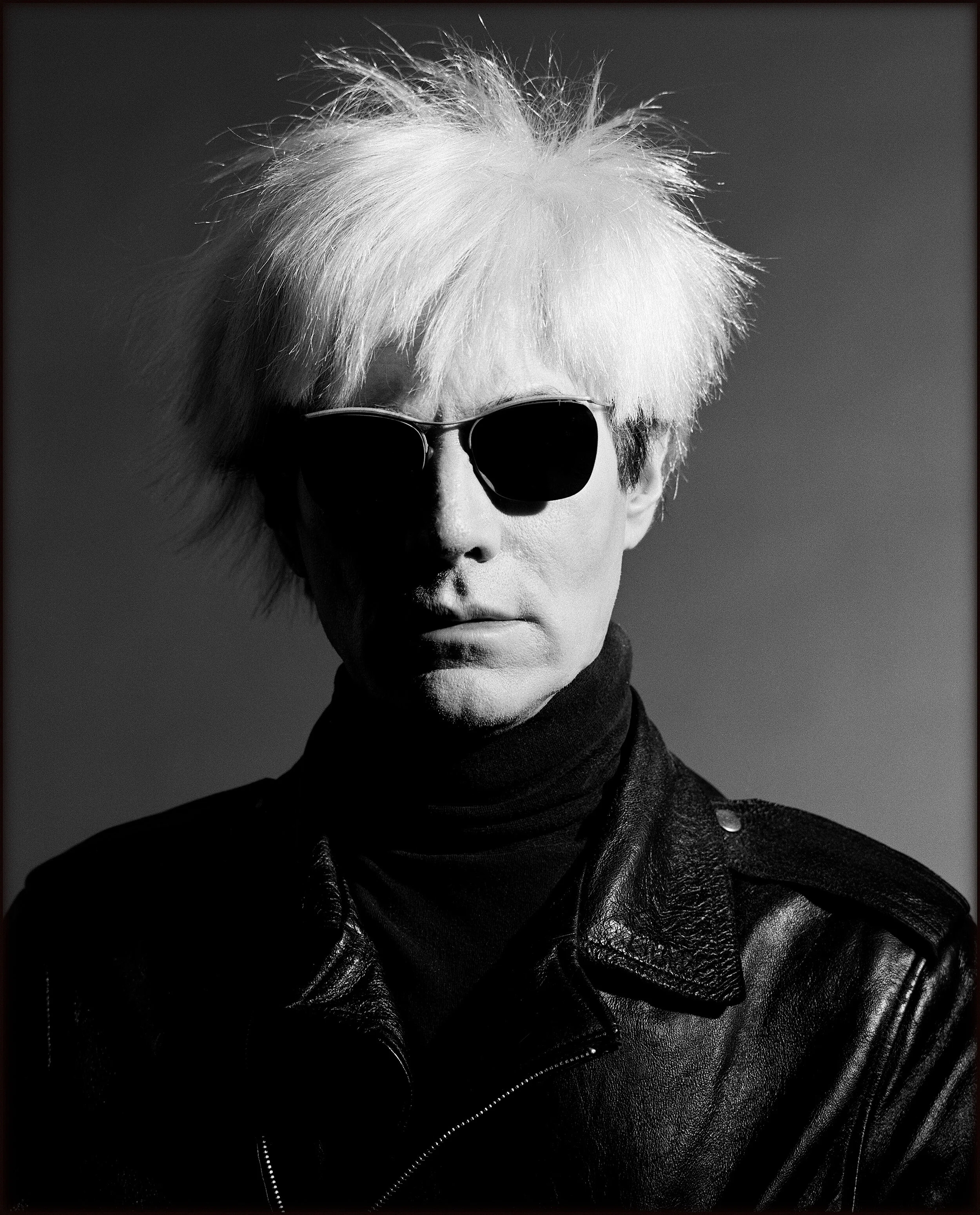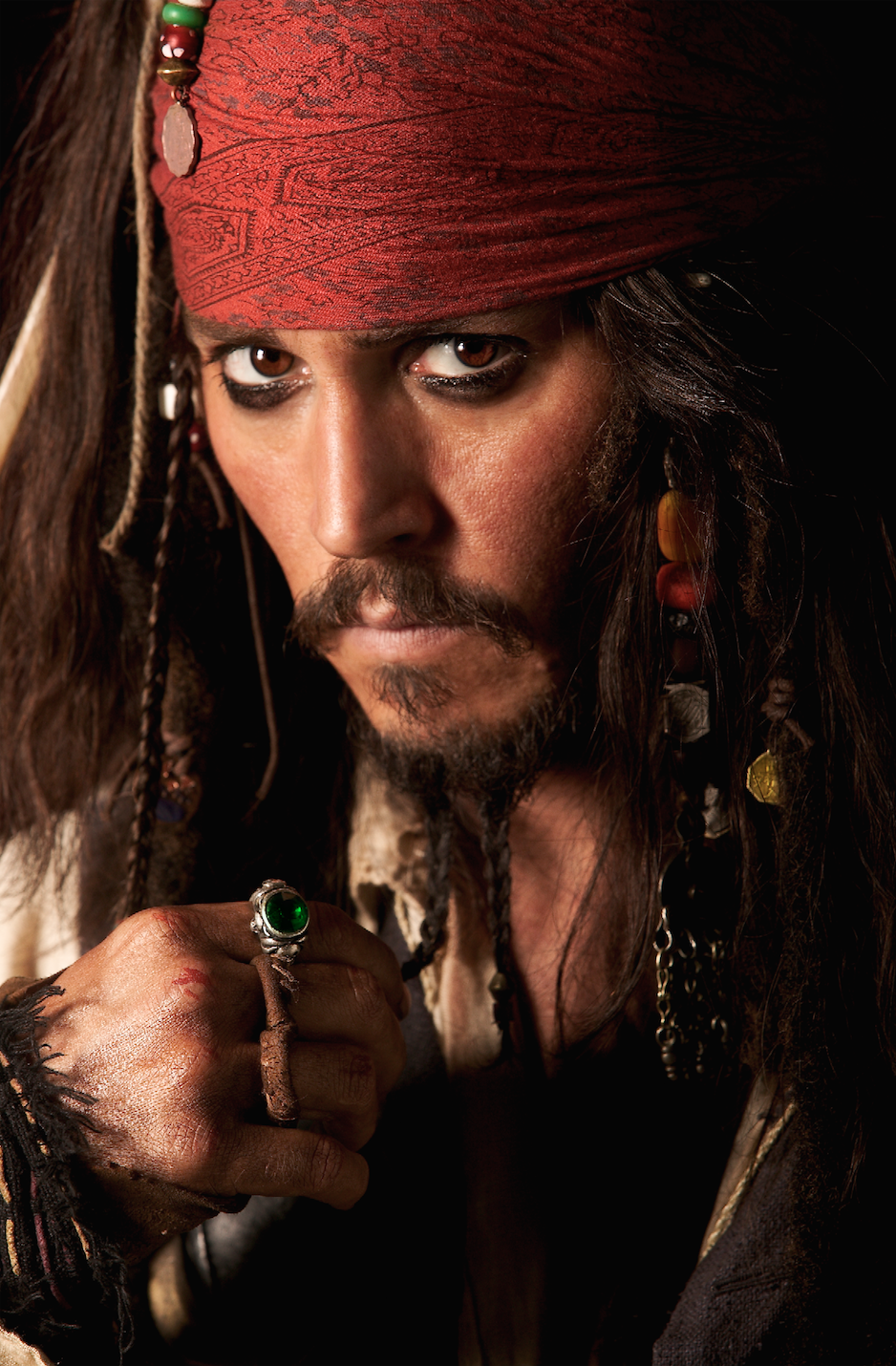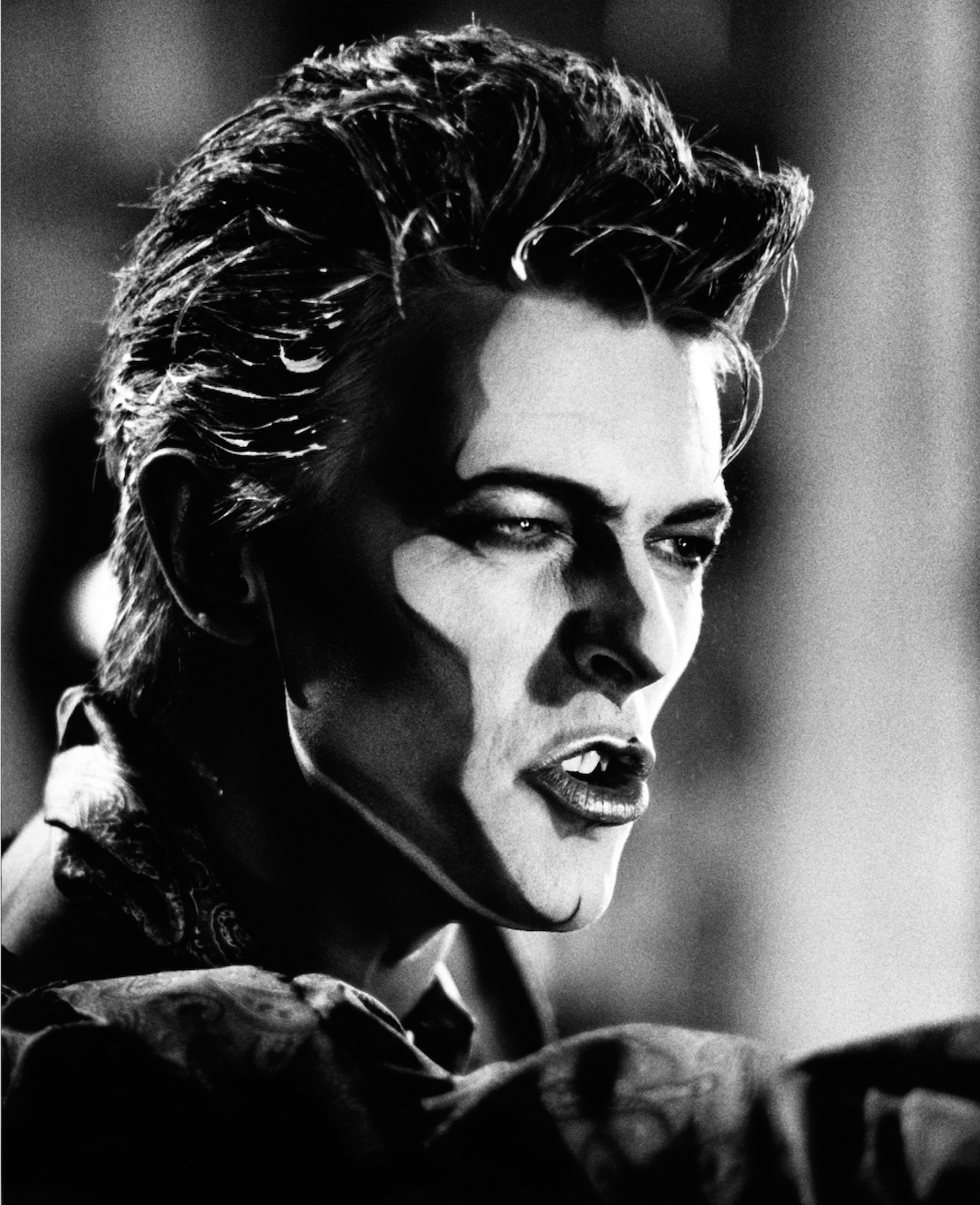Interview with Greg Gorman
Photographer legend Greg Gorman gives us a rare glance at the souls of some of the most famous people with his perceptive portraits that are now shown in his new exhibition in Berlin.
Andy Warhol, Los Angeles, 1986 | © Greg Gorman courtesy Galerie Hiltawsky
“Painting with light” is what he does, says Greg Gorman about his work as a photographer. This approach is especially recognizable in his black-and-white images – many of them nudes. It’s an interplay with light and shadow to accurately focus on the individual beauty of his talent. Gorman is a perfectionist, he admits. However, he thinks a perfect picture will never be taken. Providing that, it’s fair to say some of his pictures are pretty damn close.
Until November 9th you can convince yourself through stunning images of 18-year-old Leonardo DiCaprio, Captain Jack Sparrow aka Johnny Depp or Michael Jackson among about 40 others at his current exhibition “Greg Gorman: Portraits” at Galerie Hiltawsky in Berlin-Mitte.
A few days before the opening I got to talk to the photographer about David Bowie, wine making and nudes.
Is there something you always want to express with your photography?
My main objective in my portraits is to capture who the people are, to capture a little bit of their soul. Trying to find out who they are behind the façade of the characters they portrait on the big screen. So it’s stripping them a bit bare. Trying to get inside their heads and capture the essence of who they are as individuals.
You started studying photojournalism with 18. Did you always wanted to become a photographer? What lead to that decision?
At the beginning, I wasn’t sure what I wanted to do. And then, in 1968, I photographed Jimi Hendrix at his concert and the next morning I processed the pictures in my friend’s darkroom. When I saw the images coming up in the tray, I was kind of hooked and thought, “wow, this is pretty cool.” So I looked for a photography class and the only class they offered was in photojournalism. I grew up in Kansas City, in the middle of America. So I started studying photography and after that coming to California to film school, but my work was always really focused around people.
Johnny Depp | © Greg Gorman courtesy Galerie Hiltawsky
Did some photographers inspire you in the beginning?
Well, in the beginning it’s funny because ironically Helmut Newton did. I don’t know, did you see the show? [“Helmut Newton: Paris Berlin. Exhibition Grand Palais 2012 // Greg Gorman: Men” at the Helmut Newton Foundation in Berlin until May 2014]
Yes, I did.
There were all my big male nudes. Helmut’s first book “White Women”… I always thought that these were like the best pictures ever. So Helmut was one of my big early inspirations. But in terms of inspiration for my work, I was always a big fan of Richard Avedon and George Hurrell, some of his work I really love. He is a big Hollywood portrait photographer. I think his work is really fantastic. And obviously Irving Penn. Even though my style is much different than his. He shot with much wider lenses; I shoot with much longer lenses. These are some people whose work I still admire.
Do you have a favourite photo you took?
I think most of the large pictures you see here. I’m quite fond of the Andy Warhol, the David Bowie, the nude of Iman, there is a male nude of Tony Ward and this one of Grace (points at the one of Grace Jones).
Do you have a favourite story about a shoot?
Andy Warhol was certainly a great story. I’ve been photographing a campaign for l.a. Eyeworks, a small eyewear company based in L.A., shooting high profile celebrities and musicians, authors, painters, performers and drag-queens, a little bit of everything. And the images always appeared as a full-page ad in Andy Warhol’s Interview magazine of the 80ies and 90ies. Andy had just recently signed a contract with Ford Models to model. He called me and asked if I was interested in shooting him for one of the ad campaigns. That’s when we created that image and it probably became one of my most famous images.
Cool. When was that?
About 1986. You weren’t around then I think.
No, but two years later I was.
Oh, just two years later?
David Bowie, New York, 1984 | © Greg Gorman courtesy Galerie Hiltawsky
Which shoot do you still have in mind as one of the most surprising ones?
I was certainly a huge fan of David Bowie. And very nervous the first time we shot. But he was really down-to-earth and really enjoying photography and we connected pretty well and created a lot of great images over the course of the ten to twelve years that we shot together. That was really exciting for me, shooting one of my heroes.
Wow, that’s a really long time.
Yeah, more or less. I shot him from the late 70ies into the 90ies – pretty long time. Album cover-wise from around the time of “Scary Monsters (and Super Creeps)” to “Never Let Me Down”, “Let’s Dance”, “Changes Two”, “Blue Jean”… So we did quite a few.
Are you still in contact with him?
Not so much now. You know now we are working on our own things, so not as much as we had in those days when we were working together a lot.
To which criteria do you choose your models if you can?
Most of the models I use for nudes, because mainly my work has centred in the entertainment segment more than anything. I’ve always liked kind of an androgynous, lean body. Back in the day you had Bruce Weber who shot bigger, more muscular guys. Herb Ritts was somewhere in the middle. And I tend to shoot the more skinnier, more dancer type models. We all had our own iconic look. And girls were a little bit more androgynous, lean, like you, I mean you would be perfect, very pretty, the right look.
Oh, thank you. Do you have a favourite person to photograph?
Model-wise?
Yes.
Well for males, someone that I certainly worked an awful lot with in the early part of my career was Tony Ward. In terms of female models there were several, but one of my favourites was a wonderful model named Mitzi Martin.
What fascinates you about taking nudes?
Nudes was kind of an after thought, because, basically, my career had been shooting motion picture people and motion picture campaigns, a lot of the work was shot in very close. At a certain point I realised that when I wanted to develop some work that would be inherently my own personal work, I needed to find something different than what people were expecting to see from me, which is most of what you see here. That’s when I decided to do nudes. And I basically kept and maintained the style that I had developed between my highlights and my shadows in terms of my lightening.
Do you prefer black-and-white photography?
Yeah.
Why?
Well, I’ve always just been drawn to black-and-white photography. I think it’s what we started out with in school. And I always felt it kind of strips everything bare of any artifice.
What do you do for a good atmosphere at the set to create these mostly very intimate images?
A lot of music.
What kind of music?
The music really is often contingent on the talent. If I’m playing what I like, it’s a mixture of… I love jazz, classic jazz, but most of the times it’s like you know from acid jazz, electronic to lounge to chill, whatever music kind of fits the subject and the person I’m shooting. You shoot someone like Pierce Brosnan, he loves Bruce Springsteen, so…
Kim Basinger, Los Angeles, 1986 | © Greg Gorman courtesy Galerie Hiltawsky
You do a little research about everyone you photograph?
A little bit, yes. Just in terms of… I have a chef who works fulltime for me, so in terms of any eating disorders and what people like. But, basically, I try to leave everything open to form my own opinion when the people get there for the photo session rather then have a preconceived idea.
So you take the time to get to know them at a photo shoot?
Oh, I spend most of the time prior to my shoot getting to know them if I don’t know them. And I spend time in the make-up room looking at them while they’re having their hair and make-up done to figure out how I want to light them, what I want to play up in the highlight and what to play down in the shadows. So I just sit there and watch them.
You give workshops. What’s your most important advice for aspiring photographers?
Well, I think, in terms of portraits, they really need to learn how to seal light and how to communicate with the talent. And then I tell them the most important thing is to develop their own and unique and discriminating style so that the work looks inheritably like their own and not like a copy of someone else’s.
Has it always been important to you to give something back with teaching?
Yes, I love the teaching, I have a real passion for it. I just finished a workshop in Norway, which was fantastic with the light there. It was the best workshop I’ve ever given and it’s been 30 years now.
Do you prefer natural light?
I do now. I mean, in the bulk of my career I shot so much studio work that it kind of burned out. I prefer to shoot more natural light now.
You started with commercial works and celebrities but by now also have a wide range of images from around the world, like “We the people”.
That was actually a commercial project as well.
Oh, really?
It was a project for Disney in conjunction with the Travel Association of America, shooting ordinary, extraordinary people around the United States for about a month.
Did it also get boring only shooting celebrities?
Yeah, it’s good to mix it up. I mean I did my 40 years of shooting celebrities and so now in this state of my life, I’m 65, I mostly teach and make my wine up in Napa Valley and have a life.
Yeah I heard about the wine. How come so?
I was always passionate about wine since I was young and then I ended up shooting for a wine maker who was a really cool guy and we became pals and kept talking. I always thought it would be fun to make wine, so he was like, let’s do it. I started in 2006.
Michael Jackson, Los Angeles, 1987 | © Greg Gorman courtesy Galerie Hiltawsky
How is it for you to be here in Berlin?
I’ve been here many times, for example last year for the show with Helmut. I have many close friends who live here. One young actor is a really dear friend of mine. He is now in Cologne doing some TV series, Mickey Hardt. Do you know who that is?
No…
He was a pretty big model and then he went on to do television, movies and stuff. Another friend is Luigi Vitali. You know the magazine DUST?
Yes, I’ve heard about it.
I shot a lot for them, these two boys. Have you ever met them?
No, unfortunately not.
They are fun. I’m off and on between here and Bologna, which is where I go in a couple of days to print my next book. It’s on street photography, very disconnected from all this.
In which streets did you shoot it?
I shot it mostly in South East Asia, India, China, Malaysia, Kuala Lumpur, little bit Vietnam and Cambodia.
Do you still have a project left you would like to achieve in the future?
Well I’ll have a couple more books coming up. I’ll start to work on them when I get back. Another book will be on male portraits, not all nudes, a mix. But the next book will be a retrospective of unpublished work, going back to the 70ies.
For more insights check out Greg Gorman’s website www.gormanphotography.com and his Instagram.




